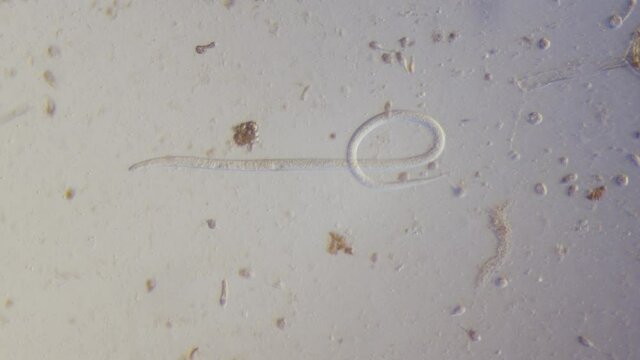
Using remote field cameras allows scientists to observe whipworms in their natural habitats without intrusion. It’s like watching your favorite wildlife show, but this time, you’re part of the research. You might be wondering about the types of cameras used for this purpose. Brands like Bushnell and Reconyx offer technology that’s perfect for these types of studies. They boast high-resolution images and advanced motion sensors. Let’s dive into how these cameras work and why they’re essential for studying whipworms.
Why Study Whipworms?
Understanding whipworms isn’t just for the sake of curiosity. These parasites can cause significant health issues, especially in tropical regions. Think of them as unwanted house guests that take more than they give. Whipworms live in the intestines of their hosts, feeding on nutrients and potentially leading to anemia and malnutrition. By documenting their behavior, researchers can learn how these organisms interact with their environment and hosts.
But what’s the real interest here? By observing whipworms in their natural habitats, scientists can identify how they reproduce, feed, and survive. This information is crucial for developing better treatment methods, improving sanitation practices, and even addressing public health concerns. It’s like putting together a puzzle—the more pieces you have, the clearer the picture becomes.
The Role of Field Cameras in Research
Field cameras act as the silent witnesses in this study. They’re strategically placed to capture imagery without the disruption that human presence can cause. This is essential for observing whipworms in action, as they’re often elusive and may change their behavior when humans are around.
These cameras are equipped with motion sensors that trigger when something crosses their path. You might be surprised to know that they can take thousands of pictures over time. This means researchers can gather data on whipworm behavior patterns, feeding habits, and even interactions with other organisms. Imagine coming back with a treasure chest of information after just a few weeks in the field!
Choosing the Right Field Camera
Not all field cameras are created equal, especially when it comes to studying whipworms. Here are some key features to consider:
- Resolution: Higher resolution means clearer images, which is crucial for identifying specific behaviors.
- Trigger Speed: A faster trigger speed ensures that you capture those quick moments that could otherwise be missed.
- Battery Life: Longer battery life means less time spent changing batteries and more time capturing data.
- Durability: Cameras need to withstand outdoor conditions, from rain to extreme temperatures.
Brands like Bushnell offer cameras with these features, making them favorites among researchers. They strike a balance between affordability and functionality, which is especially important for projects with tight budgets.
Setting Up Field Cameras
Now that you’ve chosen your field camera, setting it up properly is key to getting quality data. Here are some steps to consider:
1. Choose the Right Location: Look for areas where whipworms are likely to be present. This could be in the soil of animal habitats or near known hosts.
2. Mount the Camera: Use a secure mounting system to avoid any movement that could affect the images. You don’t want your camera to wobble every time the wind blows!
3. Adjust Settings: Set the camera to the right mode for your research. For whipworm studies, you may want to focus on motion-triggered photos rather than video to conserve battery life.
4. Check Regularly: If possible, check on your camera periodically to ensure it’s functioning well and capturing the desired footage.
By following these steps, you’re setting yourself up for success in gathering data that can contribute to a greater understanding of whipworms.
Analyzing Captured Data
After weeks or even months of capturing images, the next step is to analyze the data. This is where the real discoveries can happen. It’s one thing to gather images, but it’s another to interpret what those images mean.
Researchers will often categorize the behavior they observe. Do whipworms tend to congregate in certain areas? Are there specific times when they are more active? The answers to these questions can lead to insights into their life cycle and behavior.
You might also consider using software to help analyze large amounts of data. Manually sifting through thousands of images can be tedious. Tools that can sort and categorize images based on certain criteria can save time and improve accuracy.
Challenges in Documenting Whipworm Behavior
Every research project comes with its own set of challenges, and studying whipworms is no exception. For instance, one primary challenge includes the unpredictability of nature. Weather conditions can affect visibility, and animals might disrupt your camera’s positioning.
Another challenge is the potential for human error. Setting up cameras incorrectly or overlooking certain locations can lead to incomplete data. Plus, there’s a possibility that the cameras may not catch everything you hope to see. It’s important to remain patient and adaptable.
Despite these challenges, the rewards can be significant. Each piece of data collected helps paint a fuller picture of whipworm behavior, which is invaluable for improving health outcomes.
Documenting the behavior of whipworms with field cameras is more than just a technical endeavor; it’s about understanding these fascinating creatures and their role in the ecosystem. By using innovative technology and strategic methods, researchers can capture crucial data to inform medical and environmental practices.
So, the next time you see a field camera tucked away in the bushes, remember it’s more than just a camera. It’s a tool helping uncover the mysteries of whipworms, contributing to a brighter, more informed future. Whether you’re a budding scientist or just someone who loves nature, the world of whipworms is an intriguing one, and field cameras are opening doors to new possibilities.
